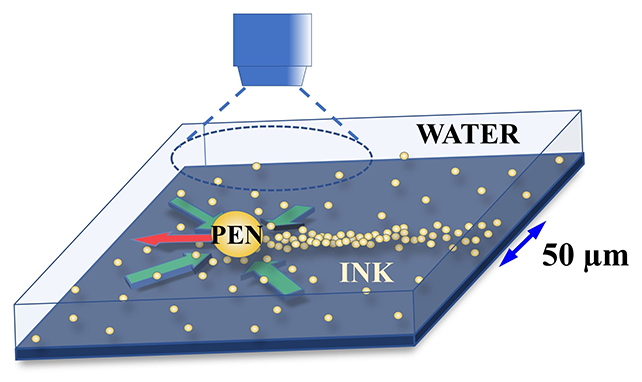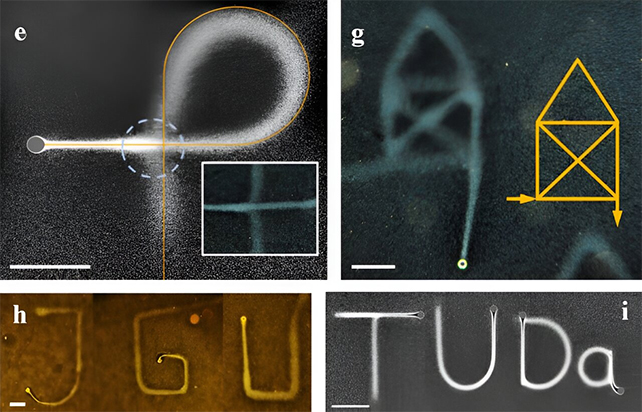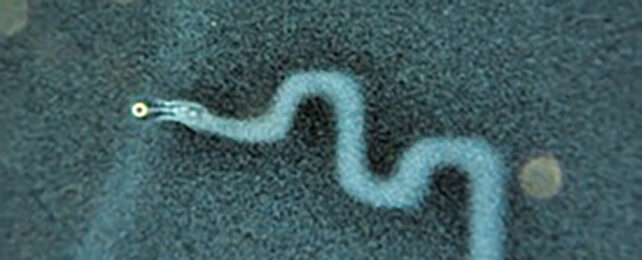There are several perfectly good reasons why water isn't a popular medium for calligraphers to write in. Constantly shifting and swirling, it doesn't take long for ink to diffuse and flow out of formation.
An ingenious 'pen' developed by the researchers from Johannes Gutenberg University Mainz (JGU) and the Technical University of Darmstadt in Germany, and Huazhong University of Science and Technology in China, could give artists a whole new medium to work with.
The new device is a tiny, 50 micron-wide bead made of a special material that exchanges ions in the liquid, creating zones of relatively low pH. Traces of particles suspended in the water are then drawn to the acidic solution. Drawing out that zone can create persistent, 'written' lines.
To keep the writing stable, the prototype moves the water around the bead, rather than moving the bead in the water. At first this was done manually, but later a programmable rocker device was used.

"In a water bath no bigger than a one Euro coin, we were able to produce a simple house-like pattern in the size of the tittle of an 'i' character in an 18 point font, and then viewed this under the microscope," says physicist Thomas Palberg, from JGU. "But we are still only in the preliminary phase."
The microscopic size of the pen – and the fact that the water moves around it rather than the other way around – ensures the liquid is kept as stable as possible. The lines stay visible for more than 15 minutes, and there's the potential to form distinct shapes using light-based techniques that stop and start the ion exchange.
As well as their physical experiments, the team also worked on some theoretical models to figure out the underlying mechanisms here.
They suggest that there's potential to expand the technique to other types of pens; ones heated by lasers, for example, that could make their own way through the water.

"This could even allow extensive parallel writing of structures in water," says physicist Benno Liebchen, from TU Darmstadt. "Hence, the mechanism could also be used to generate highly complex density patterns in fluids."
As the researchers themselves say, this is very early days for this technology, but it opens up a range of possibilities, from creating new types of art to being able to track chemical traces as they move through liquids.
Humans have been writing things down for some 5,000 years or more, and creating various forms of figurative and abstract art for a lot longer than that. Our desire to draw as evolved considerably throughout history. Being able to write in water and other liquids means the opportunity for a lot more evolution in the future.
"Overall, the approach opens a versatile route for writing, drawing, and patterning fluids – even at the micro-scale," write the researchers in their published paper.
The research has been published in Small.
